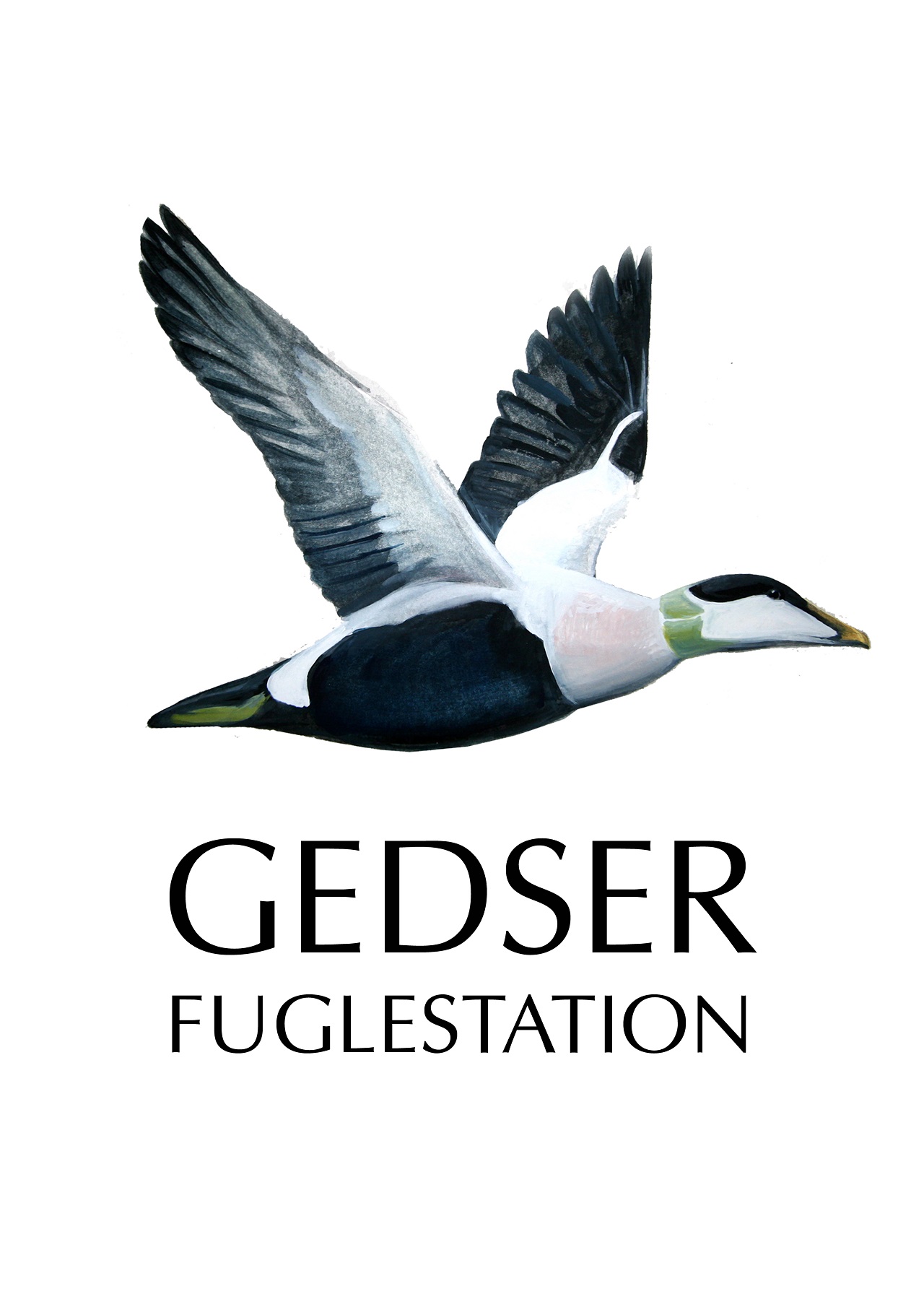Gedser Fuglestation Blog
Her på Gedser Fuglestations blog bringes korte nyheder i dagbogsformat om hændelser på fuglestationen.
The Start of Another Week - Descent of the Eiders!
A similar but other good morning today: 96 new ringed birds and 8 recaps, again mostly Robins “Rødhals” and Chiffchaffs “Gransanger”. Today was the day with the most species in the ringing, we had 15, one new, that Robert and I did not have the last days: It was a Bluetit “Blåmejse”.
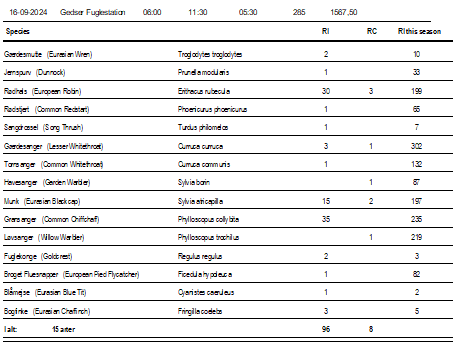
The night was cold again, so still not so many species of moths, but every day there are surprises. Three new species for the season: The Red Underwing (Rødt Ordensbånd), The Brick (Cirkel-Jorfarugle) and the Pink-barred Sallow (Toga-Septemberugle).The last two ones were new for Hanelie (happy woman).
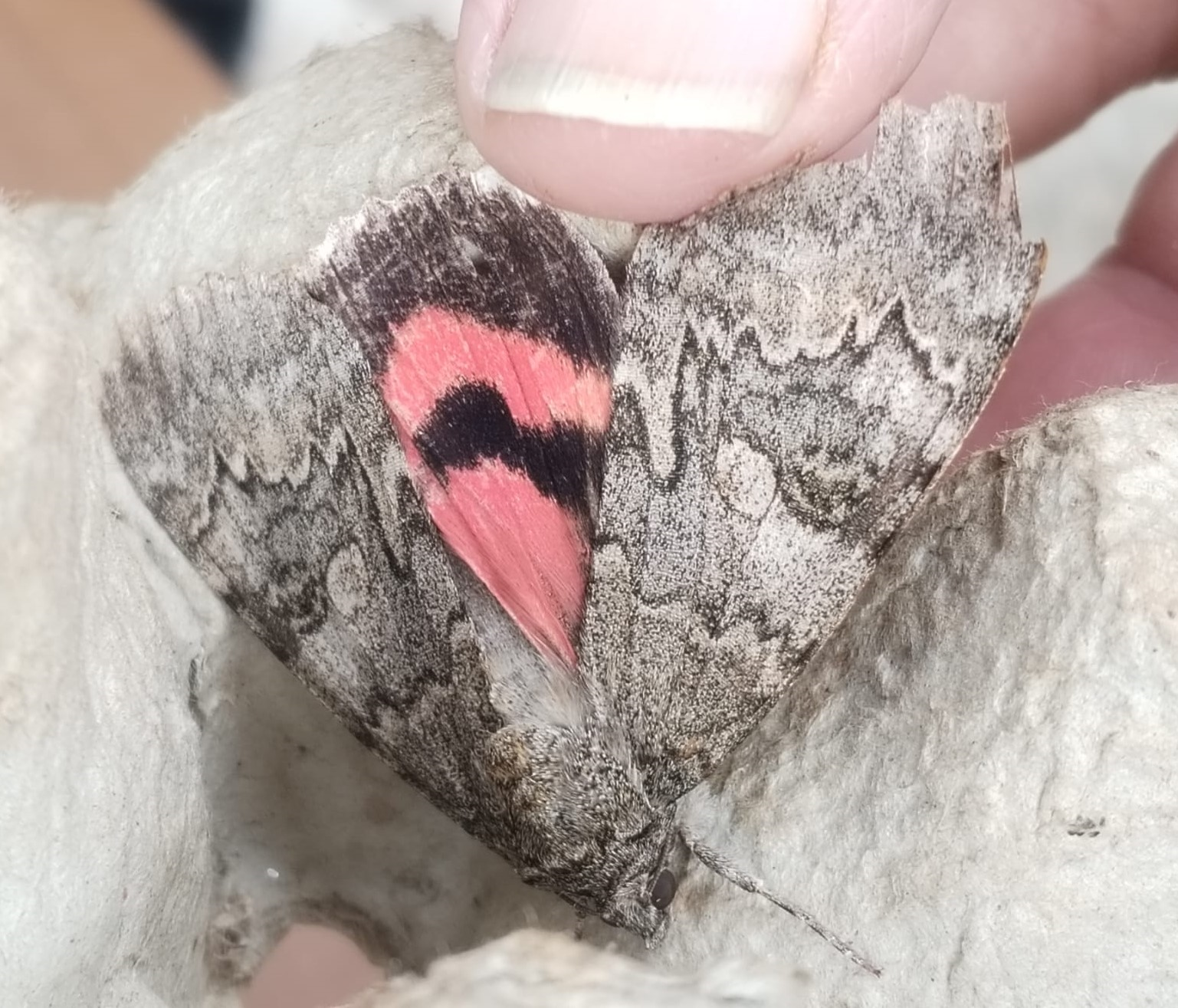
Red Underwing (Rødt Ordensbånd)
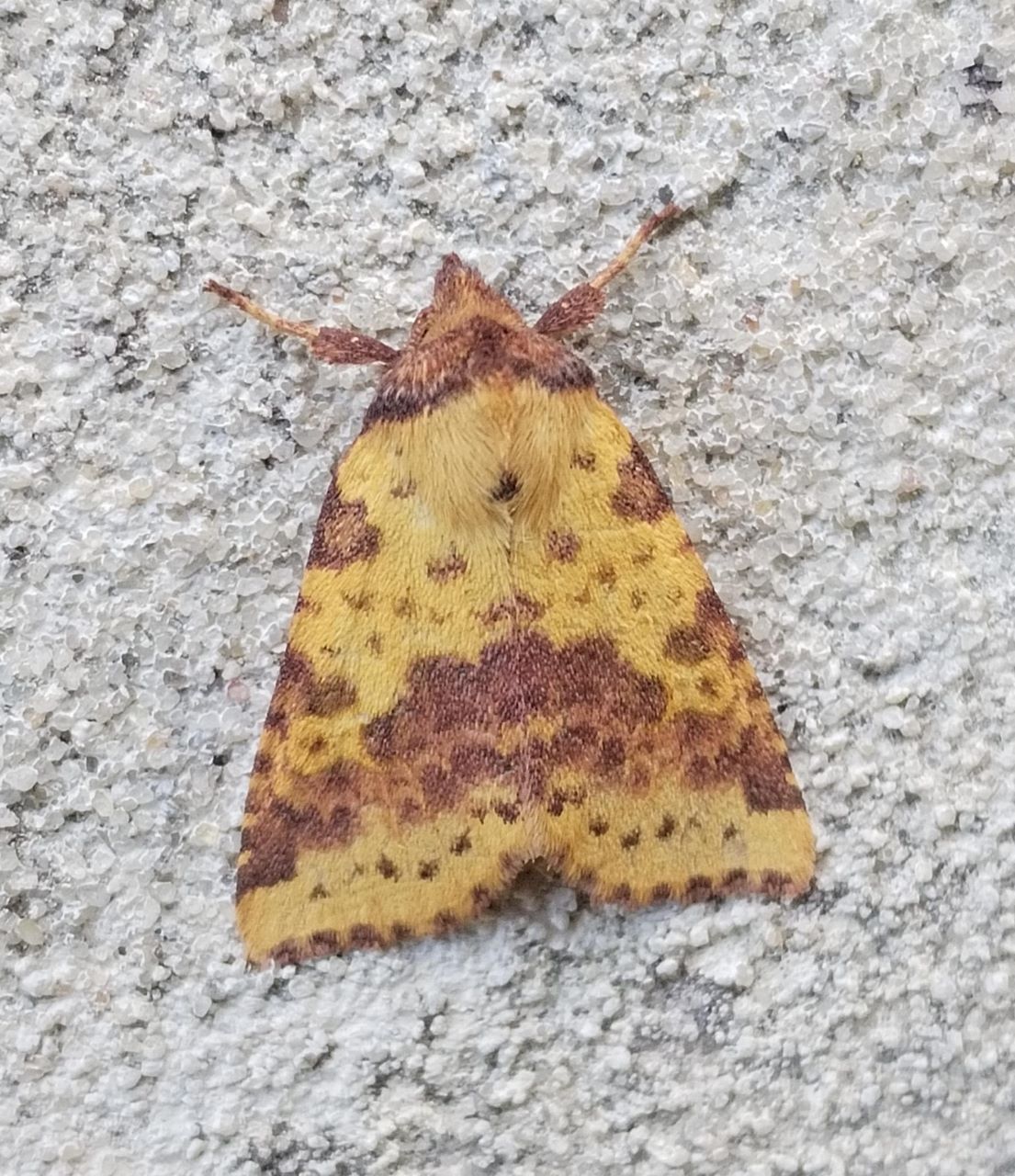
Pink-barred Sallow (Toga-Septemberugle)

Migration at Gedser Odde: This evening, I have sat down to write my first entry for the Gedser Fuglestation blog, and I hope the first of many (but we will see how this one goes!). Larissa is my name, and I arrived to the station on Thursday. Today was my fourth morning at the tip, and I was filled with anticipation and tea, as usual. We were greeted at the tip with another beautiful sunrise, albeit a bit cloudier than yesterday.
Today we counted a total of 2901 individuals, representing 31 species. It was truly a day for the Eider/Ederfugl (Somateria mollissima), with 1083 individuals migrating South West/SV. The morning flocks comprised some usual suspects: Common Scoter/Sortand (Melanitta nigra) and Velvet Scoter/Fløjlsand (Melannita fusca) – a nice balance of mixed and single-species flocks helped improve my skills to differentiate the two species, along with wisdom shared by Mads and Lara (my gratitude to you both.)
A single Gannet/Sule (Morus bassanus) was a welcome sight, as it glided above the water. Soon after, an Arctic Skua/Almindelig Kjove (Stercorarius parasiticus) was spotted moving North East/NØ close to the water, and observed harassing a gull for the gull’s food. Skuas are known for their Kleptoparasitism, meaning “parasitism by theft”, so I found this species’ namesake behaviour very exciting to witness.
Today I also gained some experience with gull identification, with good views of Common Gulls/ Stormmåge (Larus canus) and Little Gulls/ Dværgmåge (Hydrocoloeus minutus). Gull identification would be one of my weaker areas as a birder, so many thanks to Mads for his patience and guidance. I am sure I will be writing more about the gulls we encounter in the coming weeks.
It was relatively quiet on the raptor front, with 5 Sparrowhawk/Spurvehøg (Accipiter nisus) and 1 Hen Harrier/Blå kærhøg (Circus cyaneus). The call of a Curlew (one of my favourite bird calls) alerted us to its presence as it flew overhead, soon heading South West/SV (Lara captured a lovely picture of the Curlew, attached below). Two more waders, a pair of Oystercatchers/Strandskade (Haematopus ostralegus), concluded the morning’s count.
I will sign off my entry this evening by sharing my happiness to be at Gedser this Autumn season, and I look forward to sharing my experience with you over the next few months.
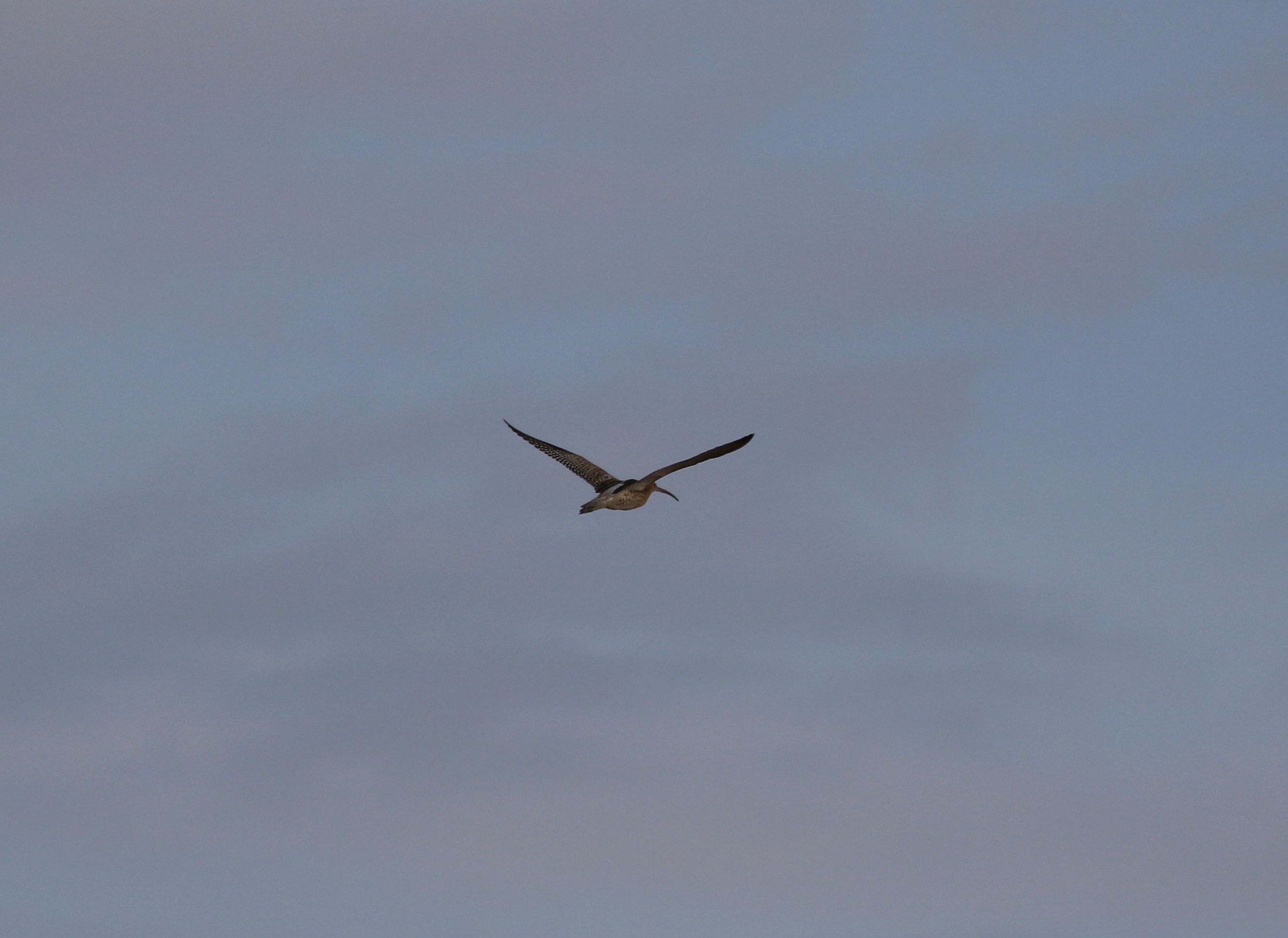
Curlew/ Storspove (Numenius arquata) taken by Lara Winsloe.
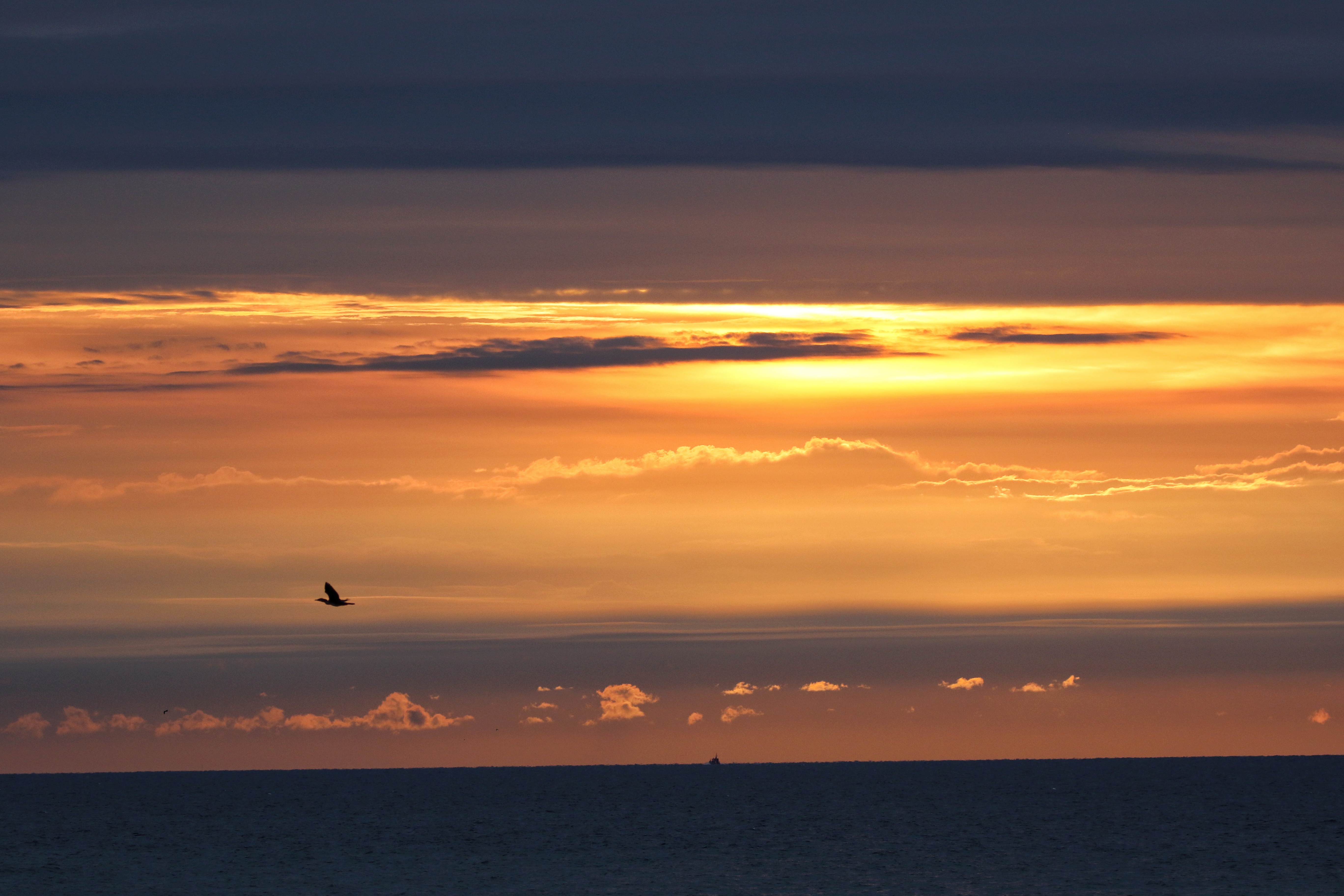
Cormorant/Skarv (Phalacrocorax carbo) at sunrise taken by Lara Winsloe.
People: Lara Winsloe, Larissa Britton, Robert Luttik, Hanelie Sidhu
